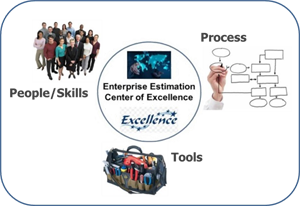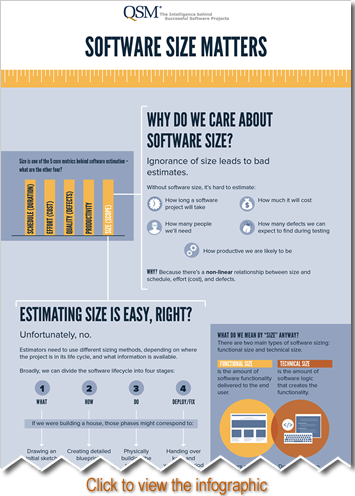Staffing a Successful Estimation Center of Excellence
When an organization wants to proactively manage their software activities from inception through development and sustainment, an enterprise software estimation or acquisition Center of Excellence (COE) is a great solution. A significant portion of our professional services business at QSM is helping companies design and stand up enterprise COE operations.
There are three main components to a successful COE implementation. They are:
 People – Finding people with the right characteristics and developing their skills;
People – Finding people with the right characteristics and developing their skills;- Business Processes – developing the right business processes to support decision making; and
- Tools – Acquiring and configuring analytical tools to support the business processes.
Our clients often ask us to identify the best characteristics and skills for a person that they plan to staff into a COE. We went back and looked at our most successful implementations, and here is what we found.
Ideal Enterprise COE Skill Set:

 There is an old adage that if your only tool is a hammer, everything looks like a nail. We use the lessons learned and experience we have gained to address current issues. But if the problem (or software project) we face today is fundamentally different from those we’ve dealt with previously, past experience isn’t the proper framework. In effect, we will be using a hammer when a saw or a chisel might be the tools we need.
There is an old adage that if your only tool is a hammer, everything looks like a nail. We use the lessons learned and experience we have gained to address current issues. But if the problem (or software project) we face today is fundamentally different from those we’ve dealt with previously, past experience isn’t the proper framework. In effect, we will be using a hammer when a saw or a chisel might be the tools we need.
